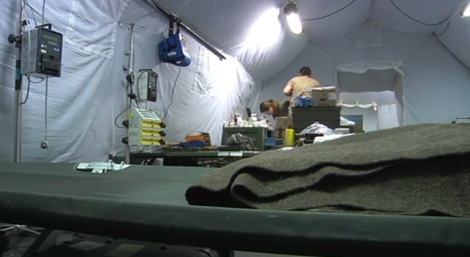Zapad: a Russian exercise that does not scare Estonians
(B2 in Tallinn) The Zapad exercise organized by the Russians and Belarusians in Belarus from September 14 to 20 should bring together only 13.000 men (according to the Russians), 100.000 according to the Lithuanians... and the Estonians. A show of force which is not new in itself.
An exercise not new and often designed in an aggressive mode
The Zapad exercise is an old Soviet army exercise. In the past, during the cold war, it already gathered more than 100.000 men up to 150.000 men. After a break, it was resumed in 1999 (Putin became Prime Minister). And its objective is already just as much political (vis-à-vis the countries of the Atlantic Alliance) as military (to qualify or, conversely, trigger new concepts). The exercise organized in 1999, for example, led Russia to adopt a new security concept (in 2000). The theme was often related to NATO...
An exercise turned towards / against the West
The Zapad 2009 exercise, ten years later, although it only officially brought together 12.000 men (with 900 tanks and 100 planes and helicopters) had an offensive scenario to say the least. Faced with an attack by NATO troops, he reacted with a simulated nuclear attack on Poland and the suppression of an uprising fomented by the Polish minority in Belarus (read in the Telegraph). Nothing very peaceful! Besides that, today's exercise could almost seem rustic.
No direct threat
The emotion in the face of this exercise of the political authorities – especially in Poland (1) and Lithuania – does not seem to be shared among the military ranks, neither of the allies nor even of the Baltic countries. The Estonian Chief of Staff confirmed this to his Allied counterparts who questioned him to find out if they were threatened. In essence, the answer was " We are not afraid. We don't feel threatened. We have the means to react, with allies ready to support us, if we were threatened. On the other hand, what the Estonian authorities (military and political) fear and dread more are attacks of low military intensity, but just as destabilizing for ordinary life. Faced with these hybrid attacks, by nature, mixing cyber attack, disinformation, civil demonstrations are felt in countries with a large Russian-speaking minority as the "real" threat (read: In Tallinn, ministers play hybrid cyber warfare).
(Nicolas Gros-Verheyde, in Tallinn)
(1) Mainly for reasons of internal politics which are recognized by no ally and in the NATO hierarchy.


